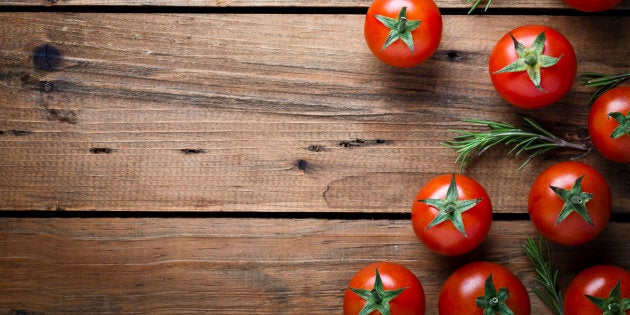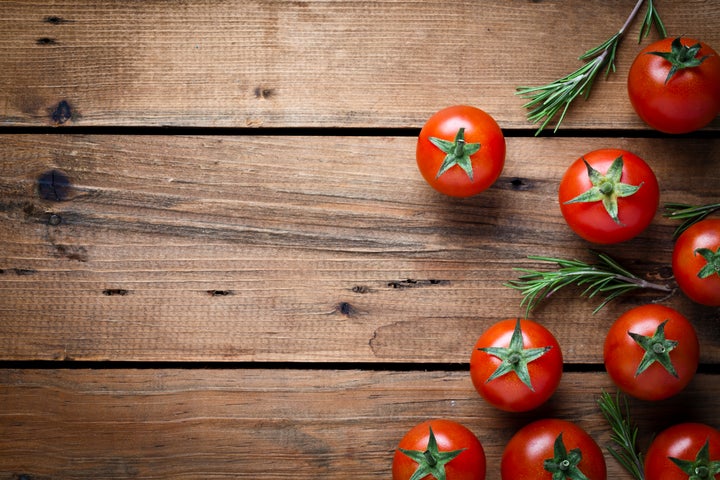

Many of the tomatoes eaten these days are too big, too firm and just plain dull compared with those from a half-century ago, according to new research.
In a paper published Thursday in the journal Science, a team of researchers say they analyzed the genetic code of nearly 400 varieties of tomatoes ― from the common red supermarket types to the funky heirlooms found in farmers markets. Led by Harry J. Klee, a professor of horticultural sciences at the University of Florida, the team found many of this generation’s tomatoes have lost key elements that make them taste, well, like a tomato.
To know what makes a good love apple, Klee said, you really have to understand three things that go into the vegetable’s flavor profile: sugar for sweetness, acid for the sour tang, and dozens of “volatiles,” or aroma compounds, that make up the euphoric, tomatoey scent.
“The tomato is unlike some fruits and vegetables in that there’s no one compound that I’d give you that you’d smell and say, ‘that’s tomato.’ Bananas, strawberries I could give you one compound and you’d know,” he said. “You’ve got sugars providing the sweetness, you’ve got acids counterbalancing and 25 or more volatile chemicals that are the aroma of the tomato. Without those you have no flavor, it’d just be completely bland.”
Unfortunately, Klee and his team found, vegetable breeders have grown varieties of tomatoes over the past few decades that are big and firm (and great for shipping), but missing many of these aroma compounds that make for a good bruschetta. Klee said what may have started as the loss of one volatile here and another there quickly cascaded into a flavorless, bland orb not worth its salt.
“If you compare tomato flavor to a symphony orchestra ... you’ve got a piece of music where you’ve got all these different parts to it. If you remove one or two instruments, it still sounds pretty much the same,” he said. “If you slowly remove instruments you might even be fooled that it’s still good, but over time you say ‘wait a minute, it’s just not right.’”
One big exception to the sad state of the average beefsteak is the resurgence of so-called heirloom varieties seen in farmers markets and upscale grocery stores. Those vegetables are often grown using generations-old seeds, selected for their flavor above all else. But they come at a premium.
Klee said a well-known, flavorful variety, the Campari tomato, can cost nearly four times the price of a regular tomato in his state of Florida. However, “most people aren’t willing to pay that difference,” he said, and “they end up with crap.”
All is not lost, however.
Researchers say most breeders haven’t had access to expensive equipment that can gauge the tastiness of a tomato. Using the new data, farmers can opt to plant vegetables prized for their flavor, rather than appearance, and expand on a $2 billion annual market for the product in the U.S. alone.
“We can easily push it back that 50 years and recapture a good deal of the flavor without compromising the modern tomato at all,” Klee said. “It’ll be much, much better than what’s out there today.”